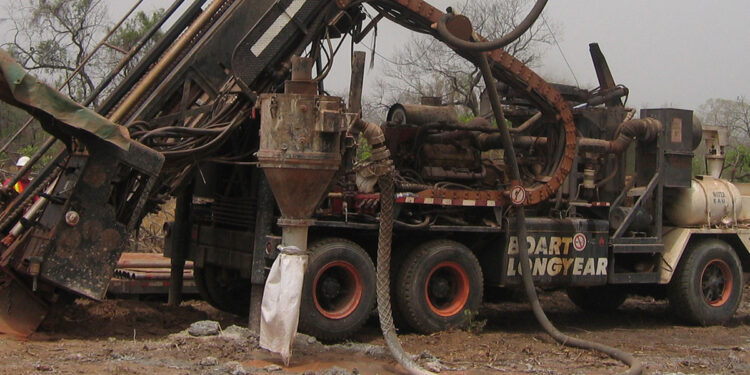Roscan Gold Corporation (TSXV: ROS) (OTCQB: RCGCF) has received positive drill results from five Reverse Circulation (RC) holes at Disse target in Mali, which appears to have discovered the extension of the mineralisation reported in the neighbouring property.
This steeply dipping mineralisation at Disse has been identified with five drill holes which outlines over 135 m of strike on the Roscan permit and starting close to surface. Additional drilling is planned and designed to extend the strike length of this high-grade gold occurrence.
Drilling Highlights – Disse RC Holes:
- 7.29 gpt gold over 6.0m from drill hole RCDBS21-0049 from 117m
- 15.09 gpt gold over 2.0m from drill hole RCDBS21-0051 from 96m
- 12.36 gpt gold over 2.0m from drill hole RCDBS21-0052 from 27m
The first ever five RC holes drilled at Disse provide exciting high-grade intercepts thatclearly merits additional follow up drilling. If this additional drilling demonstrates further continuity and expansion of the mineralisation, it could be captured as additional ounces in the upcoming maiden resource.
An intense system of old artisanal mine pits in the field highlights the surface extent of the Disse mineralisation trend and indicates the potential to further extend the current strike length.
President and CEO, Nana Sangmuah, said the WNW-ESE direction of the mineralisation is unusual in this zone but could have a longer extension toward the WNW, further than dolerite sill, SE plunging, which hampers the gold mineralization artisanal operation to the NW.
“The Disse discovery is yet another grass roots discovery for Roscan and highlights yet again the significant prospectivity of our large land package of which a large majority remains untested. A follow up drill campaign is being planned to follow up on the success of these initial discovery holes at Disse.
“In addition to this new grass roots discovery at Disse, a recent target prioritisation exercise has uncovered multiple additional high priority anomalies which could lead to additional new discoveries like Disse, and which would continue to build scale around our advanced and established focus areas at Mankouke South, Kandiole and Kabaya.
“With around 9,800 m currently at the lab awaiting assay and an additional 3,000 m of drilling currently in process or to be drilled in the current programme, we expect additional drilling news flow in the weeks and months ahead as we build towards the release of our maiden resource by the end of Q2 2022.”
Geology
The gold mineralisation at Disse is an extension of the mineralisation reported by Oklo on the Eastern boundary of our permit and lies a few km from the Seko gold deposit but also not far from the prospective NE-SW structural Siribaya-Mankouke-Seko corridor. From the RC chips, the gold mineralisation at Disse occurs within the acid to intermediate intrusion crosscut by a dolerite sill.
The gold zone is associated with a hard brownish alteration zone with pyrite in the fresh rock and limonite in the saprolite horizon. One or several straight brittle structures seem to be carrying the gold mineralisation.
From the EM airborne geophysics, Roscan interprets the intrusive as a pluton around which several other gold occurrences beyond Disse have been discovered such as Kabaya, Moussala MOU1, and the Seko deposit (Oklo).
Roscan uses Geodrill Reverse Circulation (RC) to drill until maximum 170m to reach the target.
For further information please visit: https://roscan.ca/












